Genre: Action Developer: Wolfteam Publisher: Renovation Players: 1 Released: 1991
Indiana Jones is one of the most recognized fictional characters ever made. From movies, to TV, to video games, who doesn’t know about this character that helped make archeology seem a whole lot cooler? And while there would eventually be two Indy games released on the Genesis in 1992 and 1994, Wolf Team sought to satiate players with their own IP offering, Earnest Evans for the Mega-CD, in 1991. You’ve got the adventurer, the whip, the same general time period, the supernatural power underlying a group trying to do dastardly deeds… but the question is, can Earnest Evans crack the whip like a hero, or does the game keep hitting itself in the face with said whip? Read on.
Adventure. It lures you into danger, yet it’s a calling that can’t be resisted. The hunt for treasure, avoiding creatures and traps… it’s the life you chose and yearn for. And that life, is about to get more complicated. There are three idols that interest you as a treasure hunter, but they also interest others… others who want to use them to call forth a hideous beast that could end the world. These underworld mobsters will stop at nothing to gain the idols, and it’s fallen to you, Earnest Evans, to prevent that from happening. The odds aren’t good, but you have to stop the underworld forces before they succeed.
The first thing you’re going to notice about the visuals in Earnest Evans, is the animation on a lot of the characters. Using smaller sprites to make up a larger character, these smaller sprites are moved and/or rotated together to give various characters a greater sense of smoothness when in motion. People, vines, trees, long bugs, a boss or two, they use these techniques to keep some aspects of the game from being a framey mess (I’ll get into the other aspects of this later). That said, the sprites and sprite bits themselves do vary a little in quality. Some, like Earnest and the other human characters, look flatter than things like the long, wavering bugs due to a better job of shading the bugs than the people. Whether it’s fewer colors or poorer color choices for the segments of the humans, the result is a bit of visual style discrepancy as you play through.
With the backgrounds, you have parallax scrolling to give things a sense of depth (quite a bit of it at times), but they vary in terms of quality. Some like the underground cavern with the waterfalls feature nice details and color usage, with good designs. Others, like the lackluster volcanic stage, or the train stage which looks empty and grainy, fall a bit short in detail, design and such. Despite this up and downing, they do range from caves and jungles, to a train and what looks like the streets of London. They also have some enemies that scale in and out, or that fire at you from the background. So even if the quality level jumps around a bit, the diversity is there.
Lastly, the cinemas in the game are pretty good for an early Mega CD game, if a bit uneven. In some, you’ll simply have a voice over going as you follow a little plane over a map, and then one level later, get hit with something possessing much more animation and action going on. The result is a bit of a roller coaster ride of dullness and interesting goings on. That said, the artwork’s more often consistent than not in detail level and style through them all, giving them a pretty good visual consistency… even if some seem to have the amount of light in the room change randomly from one picture to another (watch when Earnest meets Annet to see what I mean). Taking all this into account, the graphics are fairly good, if a bit underwhelming at times.
When it comes to sound, the game holds its own pretty well. Since this is a Wolfteam game, you’ll hear a lot of familiar sound effects if you’ve played their Genesis releases. They’re not bad effects really, with explosions, item pickups and such that sound all right. But some are pretty similar to one another, making them not as diverse as one might expect since this is a CD game. So basically, the sound effects do their job, but aren’t too memorable beyond thinking about how many other games they’ve been used in. On the flip side of that, the music is quite good. You’d expect it to be to at least some degree since it’s on CD, but the compositions are done well thanks to Motoi Sakuraba’s talents, and those compositions are filled with catchy beats, varied genres (all with synth-pop overtones), and even a “theme song” that’s used and referenced in several tunes. Couple all that with good quality synths/instruments, and this game has a fine soundtrack.
Also notable are the sounds used in the cinemas during the game. The voice acting is a bit above what you’d expect for an early ’90s game. Thankfully it’s not Resident Evil-style “so bad it’s funny,” with voice inflections to match with what’s happening onscreen, screams, grunts and such, all in their proper places. At worst, it’s serviceable, but it’s usually a step or two above that. The sound effects come across the same way. Simple soundscapes, whip cracks, rushing water… what’s needed is there and done well enough so as not to come off badly. So overall, despite the overused in-game sound effects, Earnest Evans does a pretty solid job aurally.
The gameplay is fairly straight forward. There are no puzzles or anything to worry about, as it’s all action. In each of the 12 levels of varying length, the goal is to reach and fight the bosses. Your main weapon is your directional whip, which you can use to not only beat enemies, but also swing from hooks and such. Earnest can walk upright, climb walls and vines, squat down and move, crawl along his stomach, and even roll forward along the ground. You’ll find apples and vials that can replace health and add health bars, some bonus points, a potion that puts you to sleep, as well as come across the occasional more powerful weapon (rocks, a stone hammer, etc.). More often than not, you be climbing up something, crisscrossing a stage, and even falling down a long hole, all of which helps to keep the “walk left to right” dullness at bay. And of course, at the end of each area, will be a boss. These bosses have a fair bit of diversity to them, going from a giant, big-eyed flying worm that snakes around you, to a hovering ship firing down from above, and a big fish you’ll have to fight while swimming underwater. This all adds up to a game that offers simple, but reasonably varied gameplay.
All right, so what’s wrong with the game? Well, plenty really. First and foremost, the animation on some of the characters is just flat out goofy looking. It’s smoothly animated thanks to the multi-jointed and rotational aspects, but it’s rigid, clunky and damn near marionette-like with how unnaturally the human characters move. There’s a good idea behind it all, and it works quite well for other aspects of the game (falling trees, moving vines, rotating platforms, etc.), but it wasn’t implemented well on some of the characters that use it. As if that weren’t enough, there’s a noticeable difference with how other characters are animated. Things like the spiders in the temple, or the bats in the cave, have painfully few frames of animation, and look very choppy in comparison.
The next issue comes with the controls. Namely, they’re unreliable at times. A good example comes from landing on spikes or enemies. You’re being hurt, so you try to jump away. Sometimes your character will do a normal jump, while at others he does a little bunny hop that doesn’t get you away from danger at all. Similar things happen going up or down stairs, and walking on uneven ground, yet the fun doesn’t end there. There are also issues with how you squat down. If you hold down, your character will kneel, then lay down. If you double tap down, he’ll lay down and roll forward. However, you can also tap down once to kneel, and then tap down a second time to lay down. This layout can lead to some considerable problems and frustrating deaths in the heat of battle as you watch your character roll right into a spike pit or standing enemy.
Another sizable problem comes in the form of the hit detection. . He’ll let go of a vine or wall for no reason at all or not grab onto them at times. His whip periodically won’t grab hooks, even when it clearly comes into contact with them. He’ll stick to the side of a platform and a scorpion spike will go right through his head… it’s just sloppy looking. Hell, sometimes Earnest is running in the ground he’s supposed to be on. And as if that weren’t enough, you’ll see some enemies hurt you without touching you… which brings me to another issue. That being, how the enemies hurt you.
They don’t hit you and knock you back or give you a moment of invincibility. No, they simply keep hurting you as long as they’re touching you, draining your life bar rather quickly. Other games have done this, but the problem with this game is that between the unreliable controls and such, getting away from some enemies proves tougher than it should be… especially when some enemies move at the same speed as you. Once they start hitting you, they just keep doing so unless you either run through them, or they stop chasing you. It makes for some very irritating moments that eat up your health bars pretty quickly, along with the few continues you have (which number five).
On the more minor side is the slowdown that regularly creeps in. Sometimes it’s understandable when there’s a big creature on the screen (like the boss fight in the tower with the many steps), or a lot of explosions from something fighting/dying (like the train boss), but there are times when it slows down for seemingly no reason as well. And with the slowdown, you also get flicker. Between the numerous explosions in spots, long bugs and groups of things, objects have a tendency to partially vanish throughout the game.
Finally, how does the CD compare to the cart version released in the U.S.? Obviously, you get CD music, and you also get cinemas quite regularly throughout the game. But the stages are identical, as is the in-game animation, so little from the main game got cut when it went to the cartridge format. However, the loss of the cinemas does hurt the cart game. Not just because they’re nice additions, but because the entire story that leads into El-Viento and Anet Futatabi in just… gone. Yeah, the language is in Japanese, but you can still get a basic grasp on what’s going on. Not to mention, the cart version completely rewrote the story, making the cart seem like a sequel to El-Viento, rather than a prequel like the Mega-CD version is.
So, in the end, what is Earnest Evans? It’s a decent idea marred by some odd visual traits and coding issues. While the graphics are pretty good in a number of ways, the visuals are done a disservice with the silly or choppy character animations (among other things). The gameplay, while not bad in and of itself, is beaten down by iffy controls and wonky hit detection. Sure, the music is quite nice, the sound effects and cinemas are decent, and the design ideas with the bosses and stages are generally solid, but it’s all overshadowed thanks to the actual game bits being sloppily done in some key areas. The result of all this, is a game you want to like because of some of its traits, but it just doesn’t come off as anything better than a bit below average. It’s not utterly broken, and who knows… you might have some fun if you try it. But it’s not as good as it could have been, and not one of Wolf Team’s better offerings.
Score: 4 out of 10

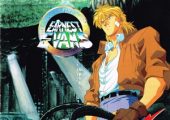
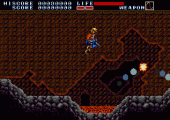
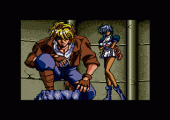
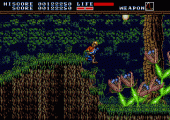
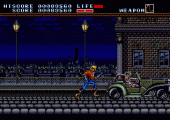
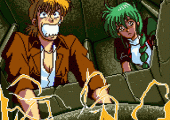
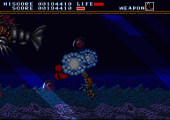
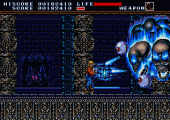
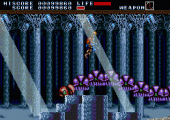
Recent Comments